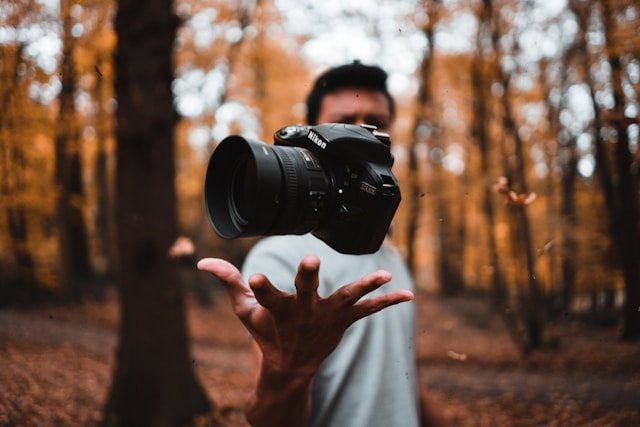Keyword: Tripods
When you’re first diving into photography or videography, a tripod might not seem like a top priority. However, as you explore different styles and techniques, you’ll quickly discover that a sturdy, reliable tripod can be one of the most essential tools in your camera bag. From capturing long-exposure shots to stabilizing your camera for crisp video footage, a good tripod expands your creative possibilities in remarkable ways. Here’s everything you need to know to choose the perfect tripod for your needs, along with some essential tips to make your investment worthwhile.
1. Why Tripods Matter in Photography and Videography
Tripods provide a solid foundation for cameras, allowing photographers and videographers to shoot with precision and stability. Whether you’re shooting in low-light conditions, using a slow shutter speed, or recording video, a tripod minimizes camera shake, resulting in sharper images and smoother footage. According to Digital Camera World, a tripod also allows for hands-free control of your camera settings, which is especially useful for time-lapse photography or self-portraits (Digital Camera World).
2. Types of Tripods and Their Uses
Tripods come in various forms, each suited for different styles of photography and videography. Here’s a breakdown of the main types:
- Standard Tripods: These are versatile and can be used in various conditions. They are often the go-to choice for beginners because of their adaptability.
- Travel Tripods: Lightweight and compact, these are perfect for photographers on the move. Despite their portability, travel tripods are often sturdy enough to handle a range of cameras.
- Tabletop Tripods: Compact and portable, tabletop tripods are ideal for macro photography or quick, casual shots. They may lack the height and stability of larger tripods but offer flexibility.
- Gorilla Pods: With flexible legs that wrap around poles, branches, or other objects, Gorilla Pods are fantastic for adventurous photographers who need a tripod in unconventional places (PetaPixel).
3. Material and Build Quality: Aluminum vs. Carbon Fiber
The material of your tripod affects both its weight and durability. Most entry-level tripods are made of aluminum, a sturdy yet affordable material. Aluminum tripods tend to be heavier, which adds stability but may be cumbersome for travel.
On the other hand, carbon fiber tripods are lightweight, durable, and resistant to corrosion, making them perfect for outdoor photography. They are generally more expensive than aluminum options but offer excellent vibration dampening. According to Photography Life, carbon fiber’s weight-to-strength ratio makes it ideal for professional work, especially if you frequently shoot in rugged environments (Photography Life).
4. Choosing the Right Tripod Height
Selecting the right height is crucial, as it affects both usability and comfort. Ideally, a tripod should be tall enough to reach your eye level without extending the center column. When you extend the center column, you often sacrifice stability, so it’s best to rely on the legs alone for height adjustments.
For tabletop or close-up shots, you might need a tripod that can extend down to a low height. Some tripods feature adjustable legs that allow you to shoot from a very low angle, which can be useful for macro photography or ground-level landscapes.
5. Load Capacity and Stability
Your tripod’s load capacity should comfortably support the weight of your heaviest camera and lens combination. Look for a tripod that can hold at least 1.5 times your camera’s weight for optimal stability. A DSLR with a heavy telephoto lens, for example, requires a more robust tripod than a mirrorless camera with a standard lens. As B&H Photo suggests, understanding your equipment’s weight will help you choose a tripod that minimizes wobble and holds up in challenging conditions (B&H Photo).
6. Tripod Heads: Choosing the Right Type
Tripod heads are essential for maneuverability and control. Some of the most popular types include:
- Ball Heads: Known for quick adjustments, ball heads allow you to reposition the camera smoothly in almost any direction. They are ideal for most photography styles, particularly landscape and portrait photography.
- Pan-and-Tilt Heads: These heads provide separate control for horizontal and vertical adjustments, making them great for videography where precise panning is essential.
- Gimbal Heads: Used primarily for wildlife and sports photography, gimbal heads balance heavier telephoto lenses, enabling smooth movement when tracking moving subjects.
Each type of head has its pros and cons, so consider what kind of shooting you plan to do most often.
7. Essential Tripod Features to Consider
In addition to the basics, look for these extra features that can enhance your tripod’s versatility and usability:
- Quick-Release Plates: These allow you to attach and detach your camera quickly, making it easy to move between shots.
- Bubble Levels: Built-in bubble levels help you keep your camera perfectly aligned, which is especially helpful in landscape photography.
- Multi-Angle Leg Locks: This feature lets you adjust each leg independently, providing stability on uneven terrain.
8. Budget Considerations
Your budget will likely determine the type and quality of tripod you can purchase. Entry-level tripods in the $50–$100 range are suitable for most beginners and hobbyists. Mid-range options ($100–$300) often offer better build quality, more features, and increased stability, making them ideal for intermediate users. High-end tripods, priced at $300 and above, are typically built for professionals and come with advanced materials and features, ensuring long-term durability and maximum stability.
9. Recommended Tripod Models for Beginners and Pros
Here are some highly recommended tripod models for various needs:
- Manfrotto Compact Action: Great for beginners, this affordable tripod provides reliable stability and ease of use. It’s compact and easy to carry, making it ideal for travel.
- Peak Design Travel Tripod: Known for its compact design and durability, this carbon fiber model is perfect for professionals who need a lightweight tripod without compromising stability.
- Gitzo Series 2 Systematic: For professionals requiring exceptional stability, Gitzo’s Series 2 is built to handle heavy loads, making it ideal for landscape and wildlife photography.
These tripods cover a range of budgets and use cases, ensuring that photographers and videographers can find the right fit for their style and needs (Photography Gear Guide).
Conclusion
A tripod is a versatile and invaluable tool that can elevate your photography and videography, offering stability, control, and creative flexibility. By considering factors like material, height, load capacity, and tripod head types, you can select a tripod that meets your needs, supports your creative vision, and stays reliable through countless shoots. With the right tripod in hand, your journey into photography and videography can reach new heights—literally and figuratively!




0 Comments